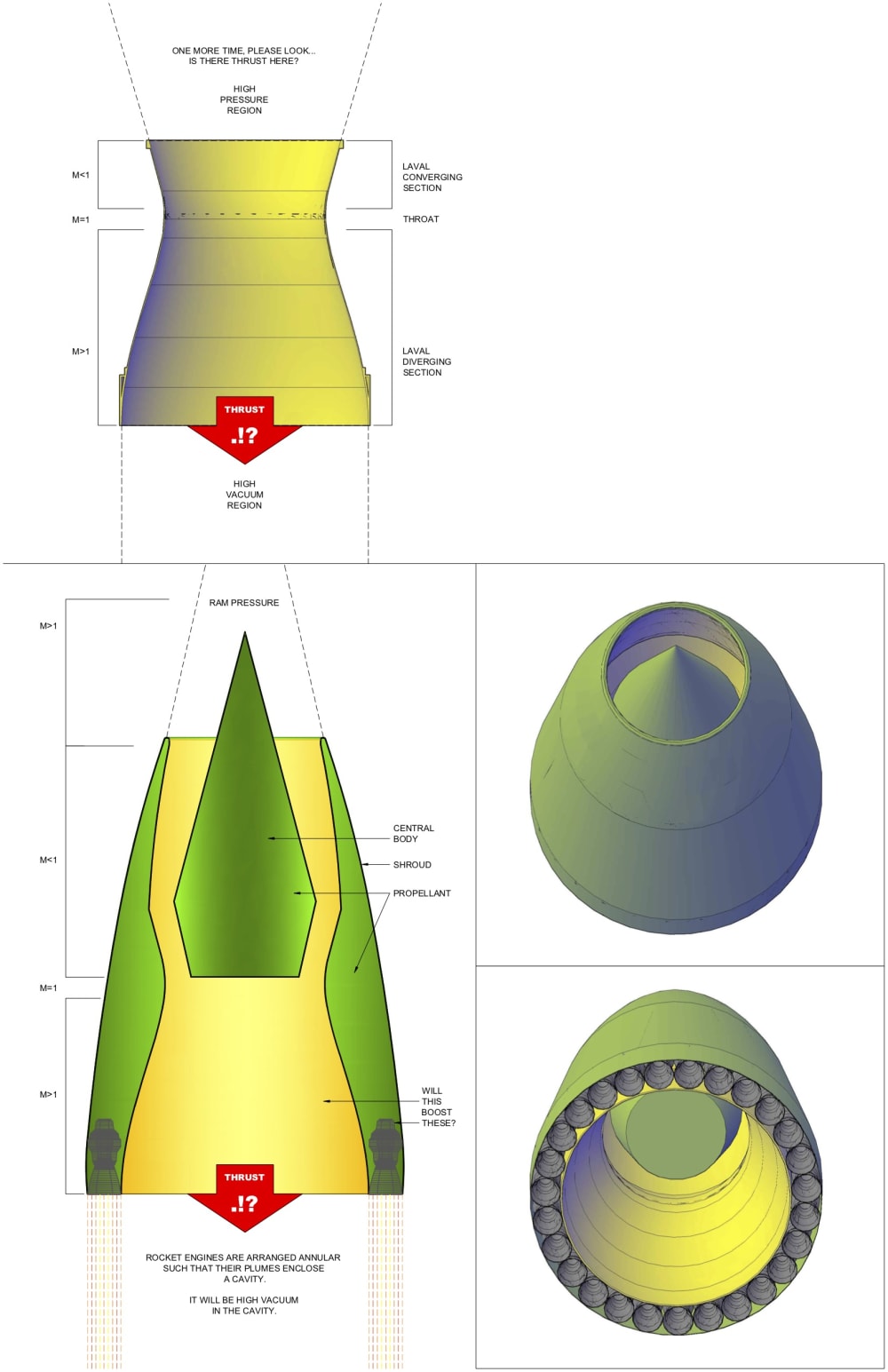If there's thrust here then, it should boost these.
This isn't so much a design than it is a question: it is entered in this contest so it can be examined and rejoined by individuals skilled in the arts.
Consider: the Laval – a tube having a converging section, a throat, and a diverging section. At Laval inlet, constant pressure is 1 atmosphere, or 101.325 kPa. At Laval outlet, static pressure is, say, 6 kPa, a high vacuum.
A pressure differential (with pressure ratio higher than the critical pressure ratio for air) will thereby exist between inlet and outlet of Laval, so that air will accelerate into the converging section, cross the throat at Mach 1 and, assuming ideal expansion, go supersonic at the diverging section.
This Laval just being there in these conditions will let a rate of air mass flow through it such that it exits its outlet at high speed – a jet that, for all intents and purposes, apparently produces thrust.
Note that aside from the Laval situated between differing pressure regions, no other inputs enter the picture, yet, thrust is created.
For lack of R&D and in the absence of experimental data available, let me cite a couple of examples of this from the movies instead.
In one scene of Avengers: Infinity War, Ebony Maw is torturing Dr. Strange for the Time Stone when Iron Man interrupts. After a brief chat, Iron Man opens fire and blows a hole in the ship's wall. Ebony Maw is ejected out into space… (google>movies.stackexchange.com).
In Aliens, Ripley battled the Xenomorph queen with a Power Loader and, when it seemed lost, opened the loading bay – causing the atmospheric pressure in the ship to throw the alien out to the vacuum of space! (youtube.com>Aliens 1986 Final Ellen Ripley vs Xenomorph Queen)
Other images of high flying aircraft getting their fuselages torn open and sucking things out are aplenty.
Now, therefore, consider: to Laval is added the forward section of a ramjet comprising of a shroud and a central body, and around the exit nozzle of its diverging section - a ring of rocket engines (refer to drawing).
Here is thus a setup wherein the rocket engines deliver their thrust, while their plumes enclose and continuously vacate a cavity (which very much should be a high vacuum) – into which, then, ram action ejects energetically through the Laval.
The annular arrangement of rocket engines initiate and the side effect derivative airjet ensues to combine in generating a greater propulsive force.
This assembly is imagined as a boosted atmospheric stage space launch system, an Atmospheric Reaction Aerodynamic Motor – that so long as there is atmosphere in ram compression at its inlet and a rocket exhaust vacated vacuum cavity at its outlet will there be critical differential pressures that will enable the Laval to generate, as a side effect, additional thrust, which would be valuable in escaping earth's gravity well more efficiently and cost-effectively, especially now that mankind is in space.
Like this entry?
-
About the Entrant
- Name:Jose Manolo Delfin Jalandoni
- Type of entry:individual
- Software used for this entry:CAD
- Patent status:none

